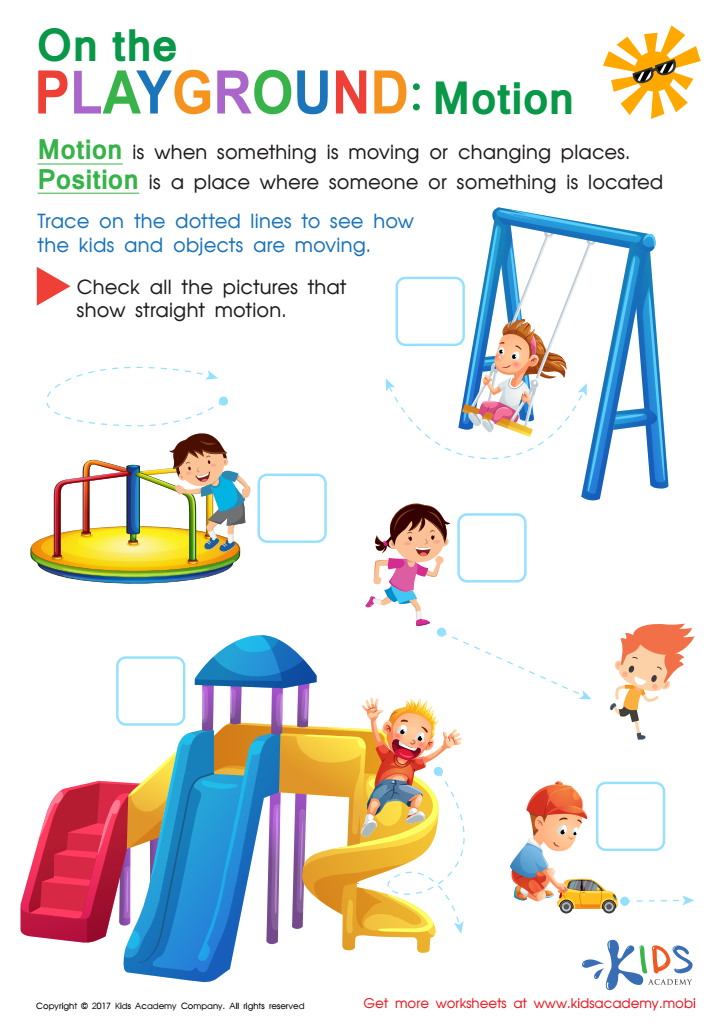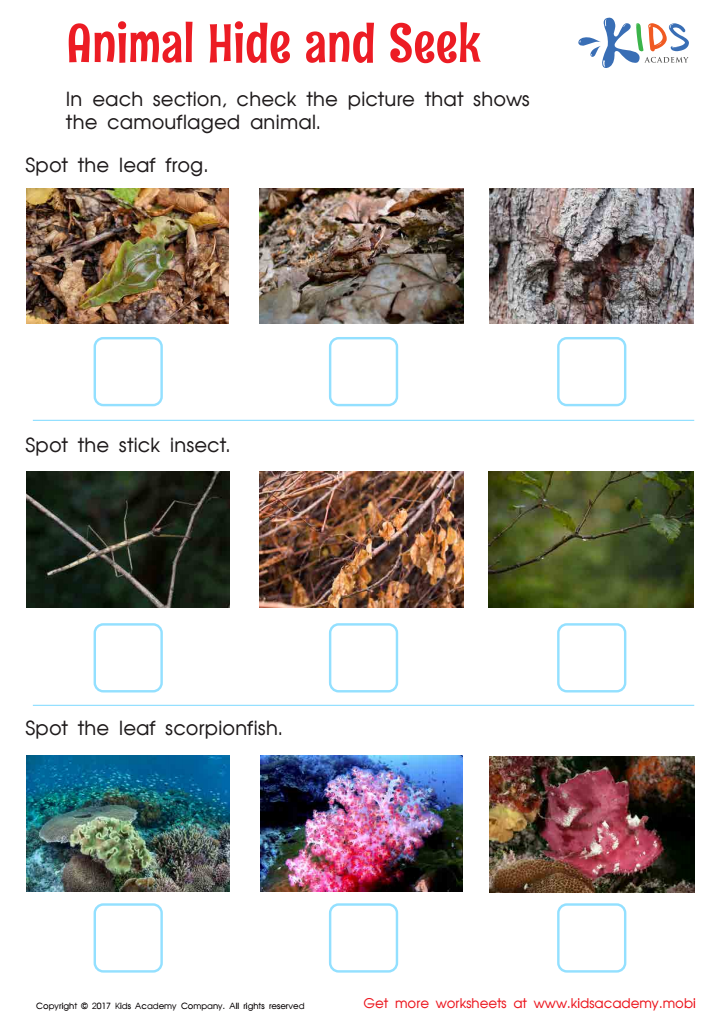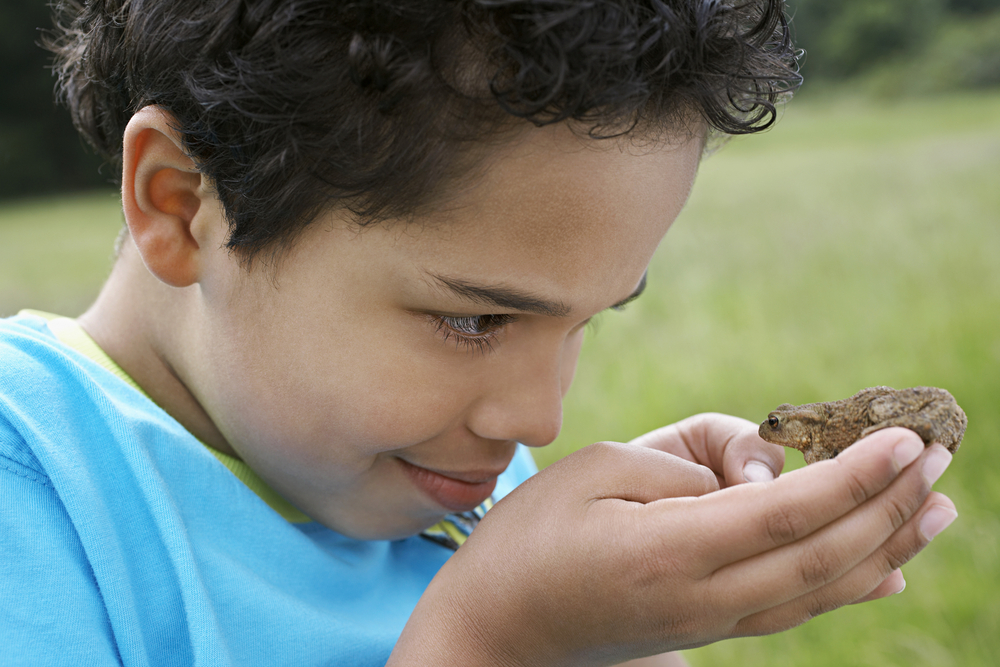Visual Perception Skills Normal Science Worksheets for Ages 4-9
4 filtered results
-
From - To
Explore our engaging Visual Perception Skills Science Worksheets, designed specifically for children aged 4-9. These worksheets aim to enhance essential visual processing abilities, enabling young learners to interpret and understand visual information effectively. The activities are tailored to promote critical thinking, observation, and problem-solving skills through fun and interactive exercises. Each worksheet allows students to practice identifying shapes, colors, patterns, and more, all while building a solid foundation in science concepts. Perfect for classroom use or homeschooling, these resources will ignite curiosity and encourage a love for learning, ensuring your child develops vital skills for their educational journey!


Position and Motion Worksheet


Will It Make a Shadow? Worksheet


Animal Homes Worksheet


Animal Hide and Seek Worksheet
Visual perception skills are essential for children aged 4-9, as they underpin many foundational learning experiences. These skills encompass the ability to interpret and integrate visual information, which is crucial for effective reading, writing, and mathematical understanding. For example, recognizing letters, shapes, and numbers relies heavily on sound visual perception.
Parents and teachers should emphasize these skills in early education because they directly impact a child's ability to navigate their learning environment successfully. Activities that enhance visual perception, such as puzzles, drawing, and pattern recognition exercises, contribute significantly to cognitive development. When children struggle with visual perception, they may experience difficulties that can lead to frustration, reduced self-esteem, and a less positive attitude toward learning.
By providing enriching experiences that foster these skills, adults can help children become more independent learners, better prepared for academic challenges. Furthermore, understanding the importance of visual perception can guide parents and teachers in identifying potential learning issues early, allowing for timely interventions. As these foundational skills develop, children are more likely to thrive academically, socially, and emotionally, leading to a more positive overall educational experience.
 Assign to My Students
Assign to My Students















